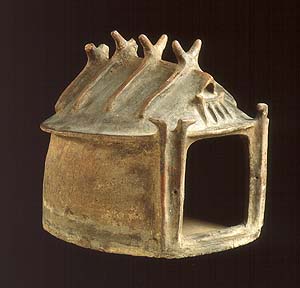*this is a published work, please do not copy, distribute or otherwise plagiarize this work without written consent of the author.
The Etruscans were a society or civilization which developed from groups of people, tied mostly by language, living in a region of North-West Italy. These groups were never developed into an official or unified state. Their culture had existed at least since the earliest evidence of their unique Etruscan language. The earliest piece of Etruscan writing has been dated to about 700 BC. But where did they come from? Where did they go?
One of these early groups that came to make up who we call Etruscans, were a group of people, discovered to have inhabited the area since at least 11000 BC. This group we have identified by their cultural artifacts, and named for the town their artifacts were first discovered near. They’re called Villanovans, though they may not have identified themselves as one culture in this region at the time. The people of this area (modern day Tuscany) appear to us in the timeline of history as they break away from a larger, earlier culture known as Urnfield Culture.

Basically, this is going back to a macro image of a region of people who buried their dead in urns after cremation. Villanovans appear differentiated from this culture when their pottery and specifically urns became unique in style.
Here is an example of a Villanovan urn:

Other art and pottery finds from this time are in a style from an era called the Geometric Period ( circa 900 to 700 BC). Things were portrayed unrealistically, using shapes and figures, and not much detail. Humans would be portrayed as oblong rectangles, with oversized arms and primitive attention to details.
The following stylistic era is called the Orientalizing Period ( roughly 750 to 580 BC). When contact and trade with eastern cultures such as the Greeks heavily influenced the change in forms and styles of pottery, urns, art, and even effecting culture. This is when the Villanovans and other cultures transform and become Etruscans.
The Etruscan culture seems to have eagerly absorbed mythology and influence from the Greeks. Many of their gods and mythical heroes had similar names and stories, and some retained their forms and are recognizable in art. However, many borrowed aspects were portrayed in a unique and distinctly Etruscan style. Here is an example of an Etruscan fresco:

Again, defined by their language, art and pottery unique to their own culture, we have finds from tombs that can be dated by pottery era based on Urn style. Here is an example, (Compared to the earlier Villanovan urn) this is an Etruscan Hut Urn:

Through their art and funerary artifacts we have learned much about this mysterious culture. We can study influences and styles, behaviors and beliefs from all of these items. Yet, the Etruscan language is not very well understood, and we are still trying to figure out more accurate translations of their texts. We could learn so much more of this culture through their writing. We have Etruscan texts preserved, but due to this linguistic set back- there are still many details of their over all culture and daily lives still to be discovered.
Recent years of excavation and study have come up with new sites, finds, and even DNA evidence which suggests that Etruscan/Villanovan peoples were indigenous to the area. This is one interesting possibility, and yet many ancient and modern sources suggest other groups may have migrated into the area. Though their culture absorbed influences which defines their cultures, the ancestral origins of these people may still only be revealed as we come to understand their own writings.

Myth tells us that Rome was founded by Romulus and Remus by digging a ditch around their village, this act actually follows Etruscan traditions. Rome was founded in an an area of Etruria. In fact, several of Romes first Kings were actually Etruscan Kings.
As Rome grew, and it’s culture and Latin language dominated, Etruscan influence and control of the area decreased. Etruscan culture did somewhat remain in pockets and cities after the Roman Conquest of 264BC, but it eventually disappeared. Rome had gained support from other regions and grown into a city-state with a powerful enough force to take over all of Italy.
Interesting read. Lot of information I didn’t know.
I love the Etruscan Hut Urn.
LikeLiked by 1 person
И это все?
LikeLike
Did you ever think that Etruscan derived from Slovens? They called themselves RASSENI what is very close to how Serbs called themselves as well as Russians. Also, their alphabet. It has 26 signs of nowadays Serbian Cyrillic.there are some monuments to be found in Asia minor with the same alphabet. A book issued by Svetislav Bilbija gives translations of many transcription in the Etruscan language.
LikeLike